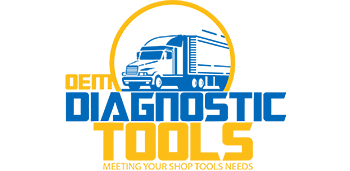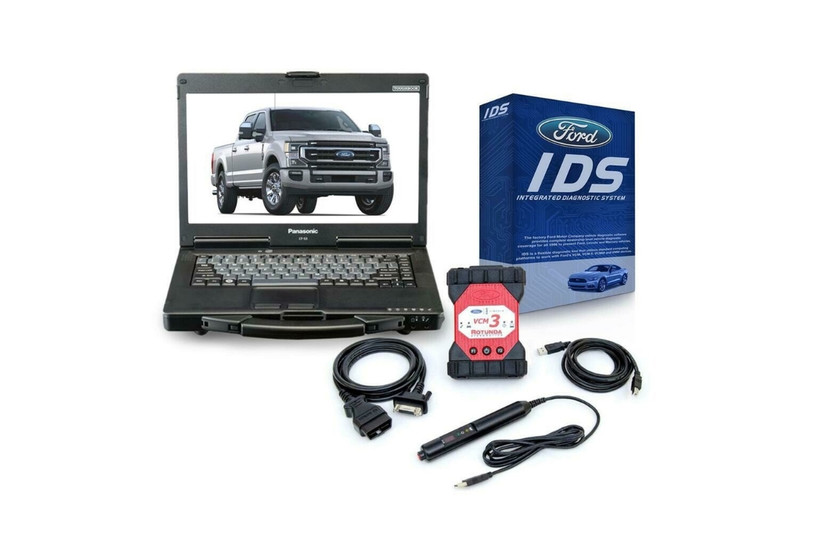Addressing Common Queries on Diagnosing Ford Engine Issues When your Ford vehicle starts showing signs of engine trouble, knowing how to diagnose these issues can save you time and money. Here's how:
- How to diagnose Ford engine issues? Use specialized Ford diagnostic tools like the Ford VCM 3 Toughbook Package with IDS to pinpoint and resolve engine problems efficiently.
In the realm of vehicle maintenance, Ford vehicles are known for their reliability, but like any other car, they can face engine issues ranging from minor to severe. With the right diagnostic tools, particularly those tailored for Ford vehicles, you can tackle these problems head-on. Here's a guide to diagnosing some of the most common Ford engine problems using OEM Ford diagnostics.
Understanding Your Diagnostic Toolkit: Ford VCM 3 Toughbook Package with IDS
The Ford VCM 3 Toughbook Package with IDS is a comprehensive solution for Ford diagnostics. This package includes:
- Ford VCM 3: A vehicle communication module that interfaces with your Ford vehicle's electronic control units (ECUs) for diagnostics and programming.
- Toughbook Laptop: A rugged laptop pre-installed with Ford IDS (Integrated Diagnostic Software) for running diagnostic tests and reprogramming modules.
- IDS Software: Provides full OEM diagnostic capabilities, including reading and clearing trouble codes, live data streaming, and module programming.
Diagnosing Common Ford Engine Issues
1. Check Engine Light
Symptoms: The check engine light is illuminated on the dashboard.
Procedure:
- Connect the VCM 3 to the vehicle's OBD-II port.
- Open the Ford IDS software on the Toughbook.
- Select the appropriate vehicle model and year.
- Initiate a diagnostic scan to read the Diagnostic Trouble Codes (DTCs).
- Interpret the codes using the software's built-in database or online resources.
Common Issues:
- Malfunctioning Oxygen Sensors: Often leads to poor fuel economy. Use IDS to check sensor data in real-time.
- Catalytic Converter Problems: High codes related to emissions might indicate this. IDS can help confirm the issue through performance data.
2. Rough Idling or Stalling
Symptoms: Engine vibrates excessively or stalls when idling.
Procedure:
- Perform the same initial connection as above.
- Navigate to the engine control module diagnostics in IDS.
- Check for codes related to idle air control or fuel system.
- Use the live data feature to monitor engine parameters like RPM, throttle position, and air/fuel ratio.
Common Issues:
- Idle Air Control Valve (IAC): Might require cleaning or replacement. IDS can command the valve for testing.
- Vacuum Leaks: IDS can help by monitoring for abnormal air intake or pressure readings.
3. Engine Overheating
Symptoms: Temperature gauge rises, steam from the engine, or coolant loss.
Procedure:
- Connect and start IDS to access the cooling system diagnostics.
- Check coolant temperature sensor readings live.
- Review historical data for any overheating patterns.
Common Issues:
- Thermostat Issues: If the thermostat isn't opening properly, IDS can help by comparing temperatures at different engine parts.
- Radiator Fan: Check if the fan is functioning through IDS's bi-directional controls to activate/deactivate components.
4. Poor Acceleration or Power Loss
Symptoms: The vehicle lacks power or hesitates when accelerating.
Procedure:
- Use IDS to monitor throttle response, turbo boost if applicable, and fuel system pressure.
- Look for codes related to turbocharger, fuel delivery, or exhaust gas recirculation (EGR).
Common Issues:
- Clogged Fuel Filter or Injectors: IDS can detect if fuel pressure is low or inconsistent.
- Turbocharger Failure: Monitor boost pressure and compare with expected values.
Best Practices for Using Ford Diagnostic Tools
- Regular Updates: Keep your Ford IDS software updated to ensure compatibility with the latest Ford models and diagnostics.
- Training: Familiarize yourself with Ford's diagnostic software through training or online resources to maximize its benefits.
- Documentation: Always document your diagnostic findings and actions for future reference or warranty claims.
By leveraging the capabilities of the Ford VCM 3 Toughbook Package with IDS, you can diagnose Ford engine issues with precision, ensuring that your repairs are informed and effective. Whether you're a professional mechanic or a dedicated DIY enthusiast, having the right tools not only speeds up the diagnostic process but also enhances the accuracy of your troubleshooting, keeping your Ford vehicles running smoothly for longer.

